At the heart of the exhibition and forming the basis of the Queen’s official image is a series of portraits taken by Dorothy Wilding (1893-1976). Wilding studied photography from the age of sixteen, having been persuaded by her uncle not to pursue a career in either acting or fine arts, and she opened her studio in 1914. In 1928 she took her first Royal Family portrait, that of the 26 year old Prince George (later the Duke of Kent), and six years later she was commissioned to take the official photographs of the Duke on the occasion of his engagement to Princess Marina of Greece.
Understanding Jewellery visits Platinum Jubilee: The Queen's Accession at Buckingham Palace
A delectable treat within the context of the tour of the State Rooms at Buckingham Palace, this exhibition is thoughtfully conceived and features many of the remarkable jewels worn by the Queen as she is seen on our stamps, coinage and banknotes - and, it’s a genuine thrill to come so close to precious pieces worn by the monarch.
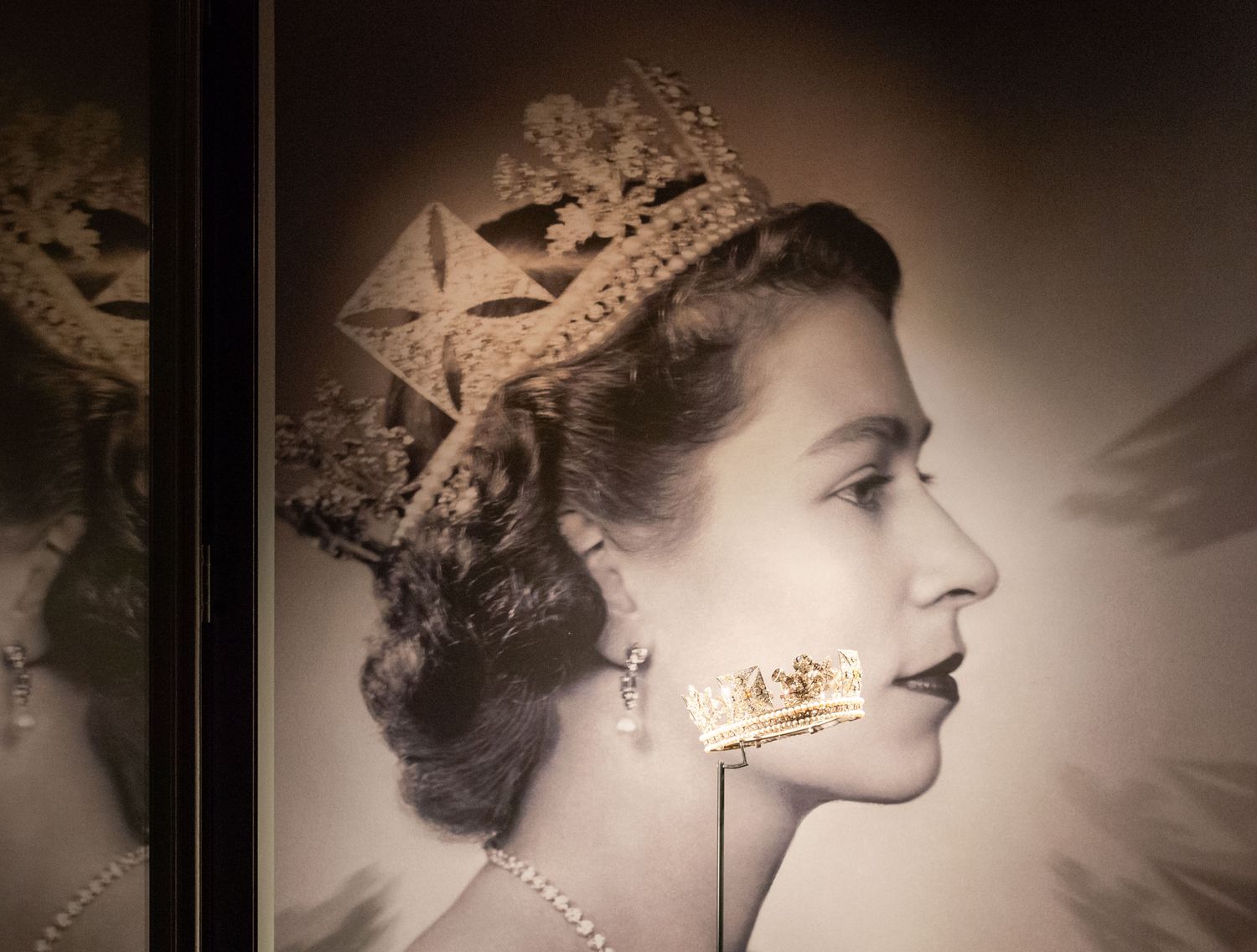
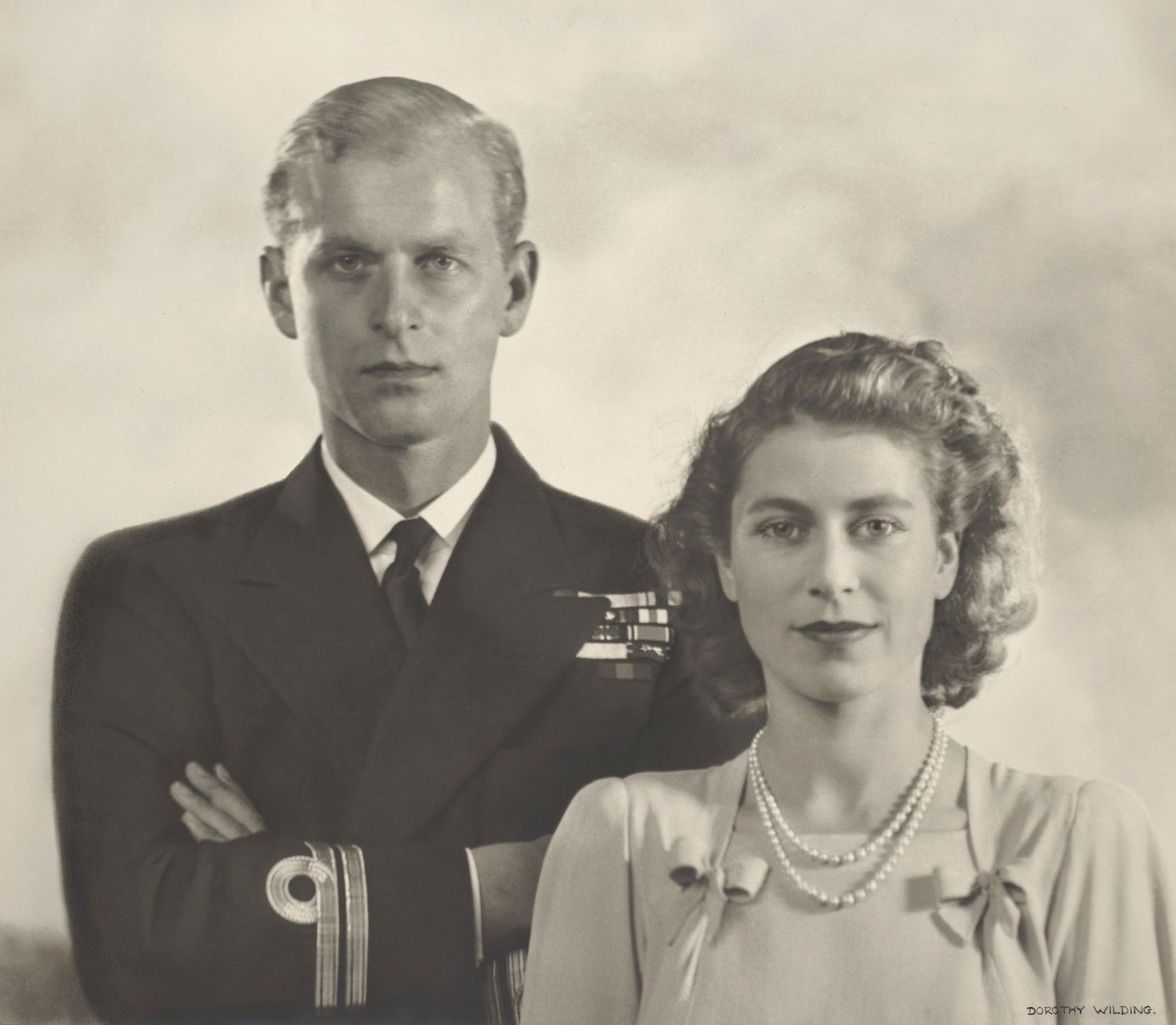
The exhibition features Wilding’s later engagement photograph of Princess Elizabeth and Lieutenant Philip Mountbatten, RN, from July 1947 – it’s a mesmerising image as the couple look look directly at the camera. A delicate smile plays across the face of the Princess whereas her fiancé is more cool, his arms folded, almost as if he’s anticipating his future life of public duty. There is only one piece of jewellery on show, Elizabeth’s beloved double string of natural pearls. The image demonstrates Wilding’s trademark style: glamour portrayed against the backdrop of a minimalist setting, and in the milieu of this dazzling exhibition here is an informally dressed Princess without her magnificent jewels.
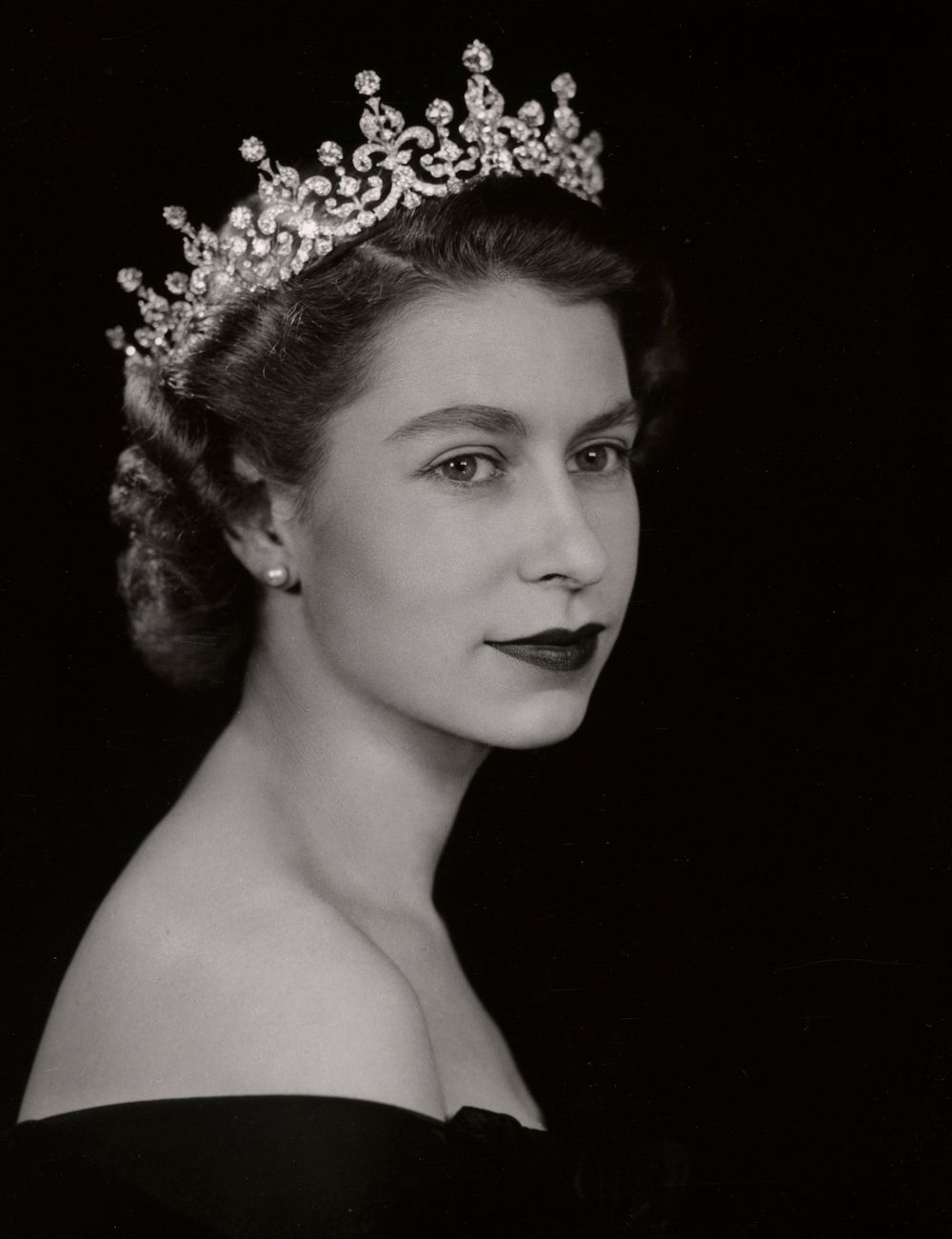
The first official sitting of the new Queen went to Wilding, taking place just twenty days after the Accession on 26th February 1952, with a second sitting on 15 April. In total 59 photographs were taken, with the Queen dressed in a number of gowns by Norman Hartnell. This shot is from the first sitting and although it was one of several selected for the postage stamp design, it was not used in the final version. The Queen wears Queen Mary’s Girls of Great Britain and Ireland Tiara, 1893 – as with all the other pieces in the exhibition it comes with a fascinating back story, and provides insights into the preferences and penchants of previous owners.
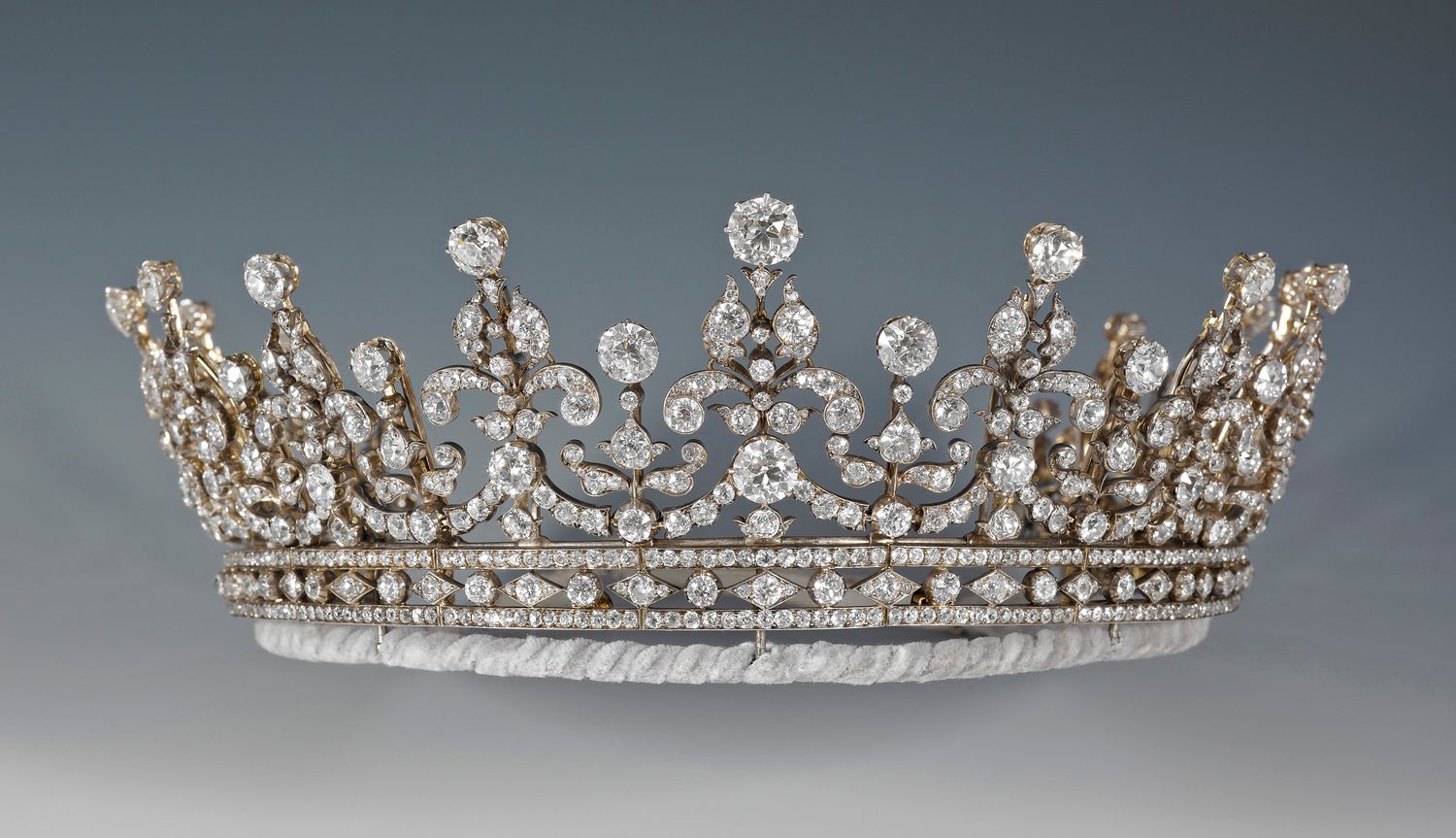
The tiara was a present to Princess Victoria Mary of Teck on the occasion of her marriage to the Duke of York, later King George V, in May 1893. Supplied by Garrard & Co. and made by E. Wolff & Co. it was purchased with funds raised by a committee chaired by Lady Eva Greville. Garrard’s Royal Ledger tells us that the tiara was originally surmounted by 14 large oriental pearls; in 1914 the tiara was adapted to take 13 brilliant-cut diamonds in their place, and around the same time the lozenge-patterned bandeau base was removed so it could be worn separately as a headband, as was the fashion of the era. Queen Mary gave the tiara and the bandeau to Princess Elizabeth for her wedding in November 1947. The Queen wore the tiara in Edinburgh, June 1952, her first public appearance after her father’s funeral, and not only is it the jewel most often seen on our coinage, bank notes and stamps, it has been worn by the Queen on many occasions over the course of her reign.
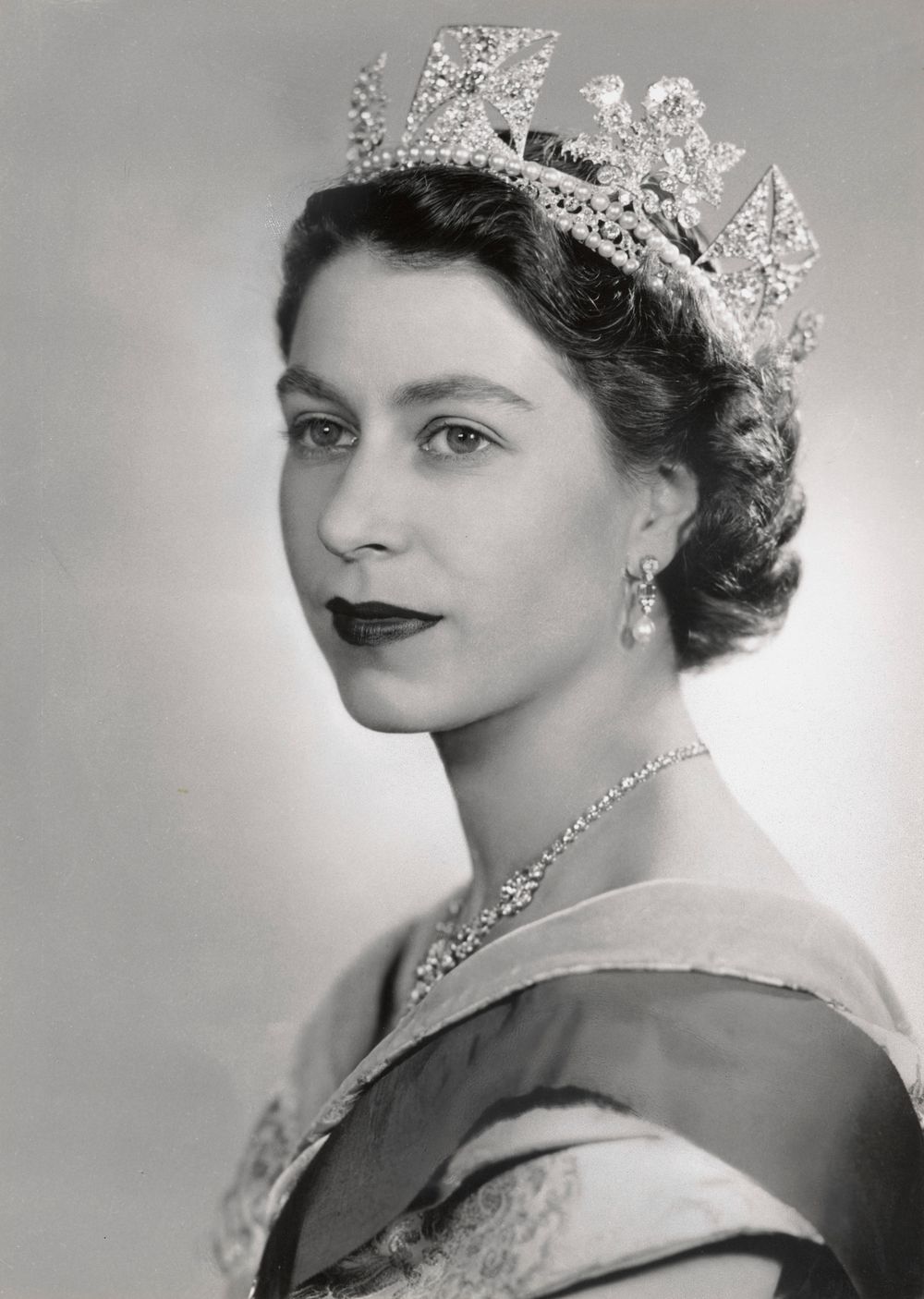
In the second Wilding sitting a coronet was worn by the Queen to make the portraits more suitable for official use. Protocol dictated that an actual crown could not be worn but the Diamond Diadem, 1820, was suitably regal. It was originally made for the coronation of George IV, probably designed by Philip Liebart, chief designer and diamond setter at Rundell, Bridge & Rundell, to be worn as the King processed from Westminster Hall to the Abbey. It was placed over George’s large velvet ‘Spanish’ hat, and sadly as the proportions of the hat were so generous the diadem was barely visible – as contemporary accounts and depictions of the procession both testify.
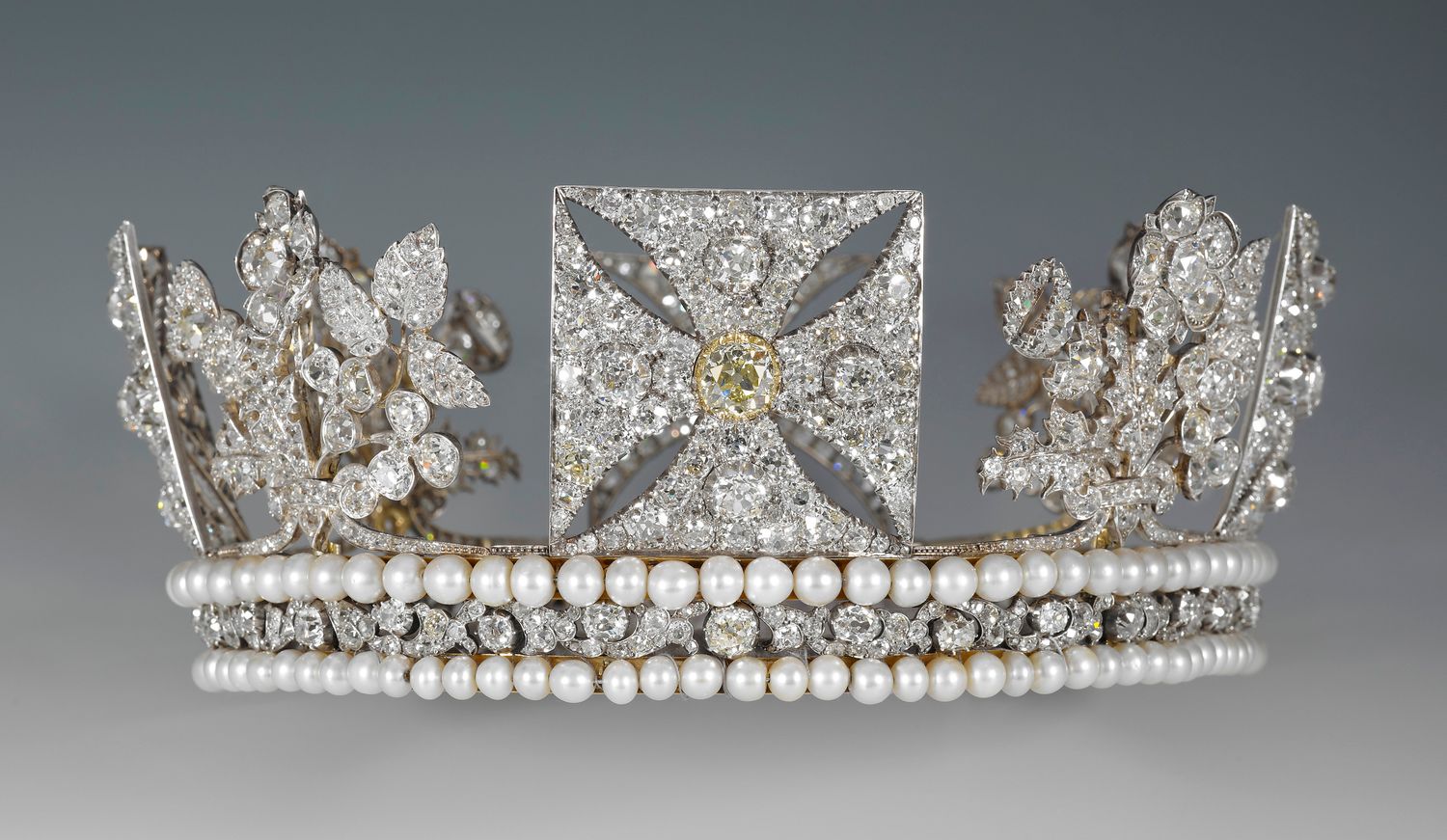
The Diadem is formed of emblems of England, Scotland and Ireland, recalling the Act of Union, 1800, with the most striking stone of all 1,333 diamonds a 4 carat pale yellow brilliant set in the front cross party. £800 was paid for the loan of the diamonds, at the time it was common practice for diamonds to be hired for coronations, and this sum accounts for approximately 10% of the stones’ overall value. The Diadem was retained by the King, after his coronation finally took place in 1821, for just over £8,000. In later reigns it was worn by female consorts and Queen Victoria was frequently painted and photographed wearing the Diadem, it can also be seen in her image as used on early stamps, notably the Penny Black. Queen Elizabeth II herself wore the Diadem on her own coronation journey to Westminster Abbey in June 1953 and she has worn it to and from every State Opening of Parliament since her first took place in November 1953.
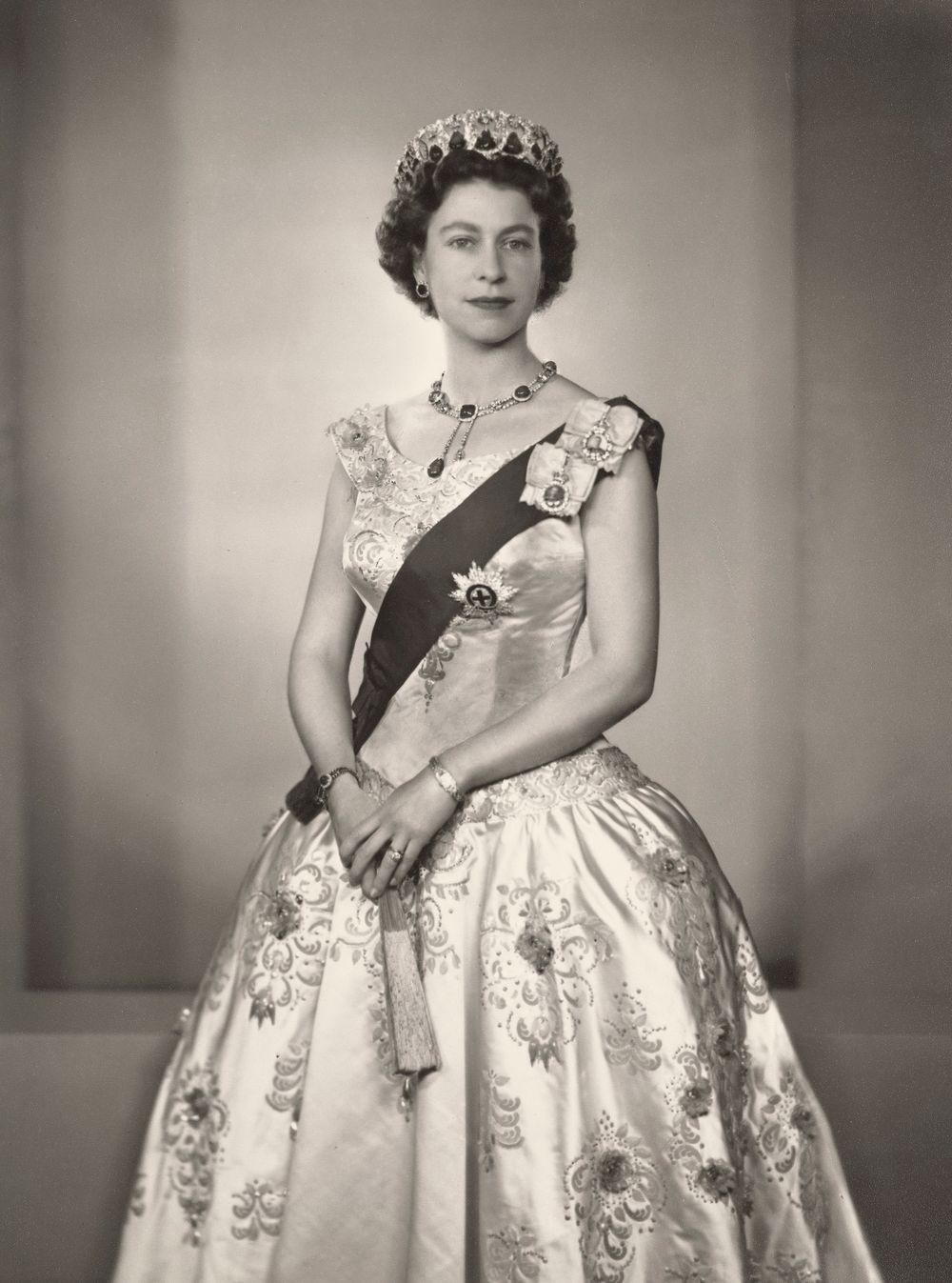
It’s not just the tiaras which catch the eye, the exhibition also includes many wonderful historic jewels. This shot dates from May 1956, possibly the last sitting with the Queen before Wilding retired and she sold her studio. In the portrait the Queen wears the Delhi Durbar necklace and Cullinan VII pendant, one of the principal elements of a parure worn at the 1911 crowning of George V as Emperor of India, and a 44th birthday present from the King to Queen Mary.
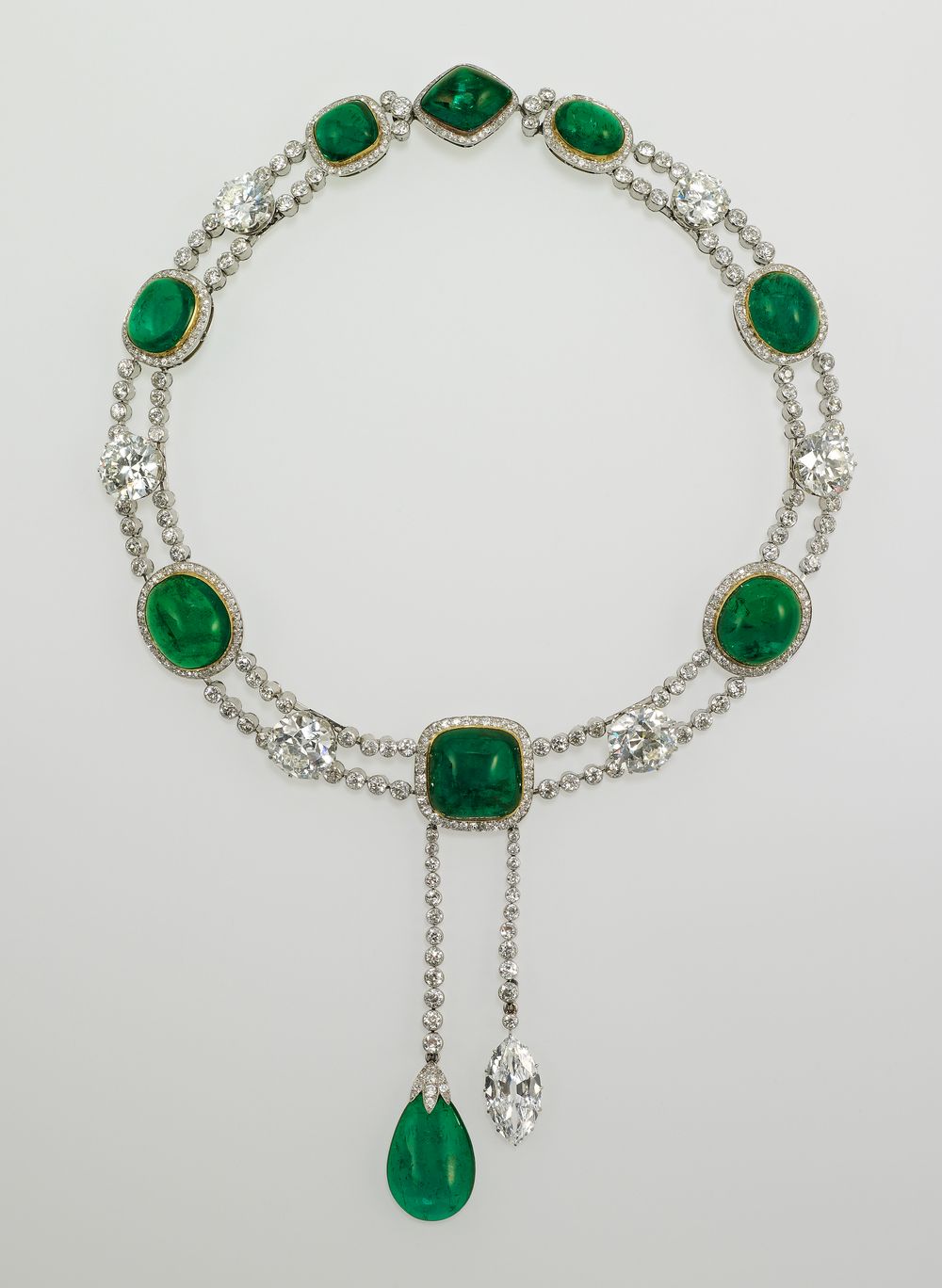
The necklace is a strikingly modern piece and its components are intriguing – the nine ‘Cambridge emeralds’ were originally owned by Queen Mary’s grandmother, the Duchess of Cambridge, eight are cabochon-cut and set between six large brilliant-cut diamonds. The ninth, a pear-shaped pendant, is pavé-set and suspended from a graduated chain of 12 brilliant diamonds. The Duchess of Cambridge, Augusta of Hesse-Kassel, had acquired a group of cabochon emeralds in a charity lottery, held in Frankfurt. Augusta’s daughter, Mary Adelaide, inherited the stones and on her death in 1897 they passed to her son, Prince Francis of Teck – Queen Mary’s brother. Francis died suddenly in 1910 and the emeralds fell into the possession of his mistress, Nellie, Countess of Kilmorey, luckily Mary was able to retrieve them from Nellie – although how exactly this was achieved is not known. Cullinan VII, an 8.8 carat marquise, was cut by Asscher’s from the main Cullinan stone, and it’s suspended as an asymmetrical pendant counterbalancing the pear-shaped emerald. The Cullinan diamond – the largest ever found – was presented to King Edward VII (1841-1910) but it wasn’t until the reign of his son, George V, that the stones cut from it were mounted, possibly due to the initiative and enthusiasm of the jewellery-loving Queen Mary.
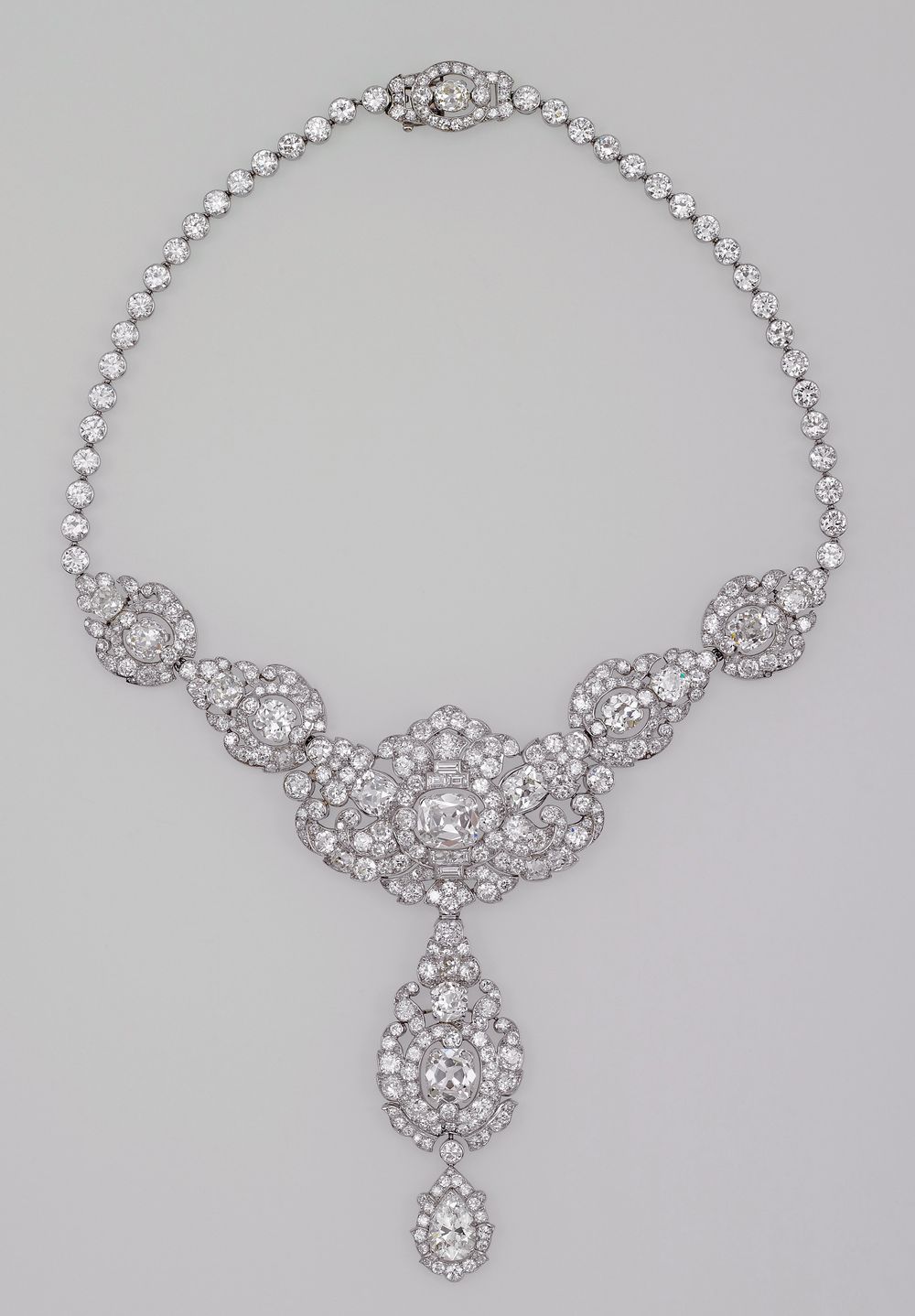
In the second sitting of 1952 the Queen wears her Nizam of Hyderabad necklace, 1935, a wedding gift from Asaf Jah VII, ruler of Hyderabad, located in south central India. Asaf Jah was one of the richest men in the world at the time so his present was likely to be spectacular, however he coupled his purchasing power with a very smart gesture of kind consideration. Rather than making his own selection of jewellery he left instructions with Cartier that the Princess should pick anything she liked from their stock – she chose two pieces, a floral tiara and this diamond necklace set in platinum. The necklace had previously been sold in 1936 and the following year was acquired again by Cartier, in its first incarnation it had included several different pendant sections but by the time it was selected by the Princess these had been removed. Both the tiara and the necklace were worn often by the Princess in the early years of her marriage, although in 1973 the tiara was dismantled, some of the diamonds were re-purposed and three floral brooches were retained.
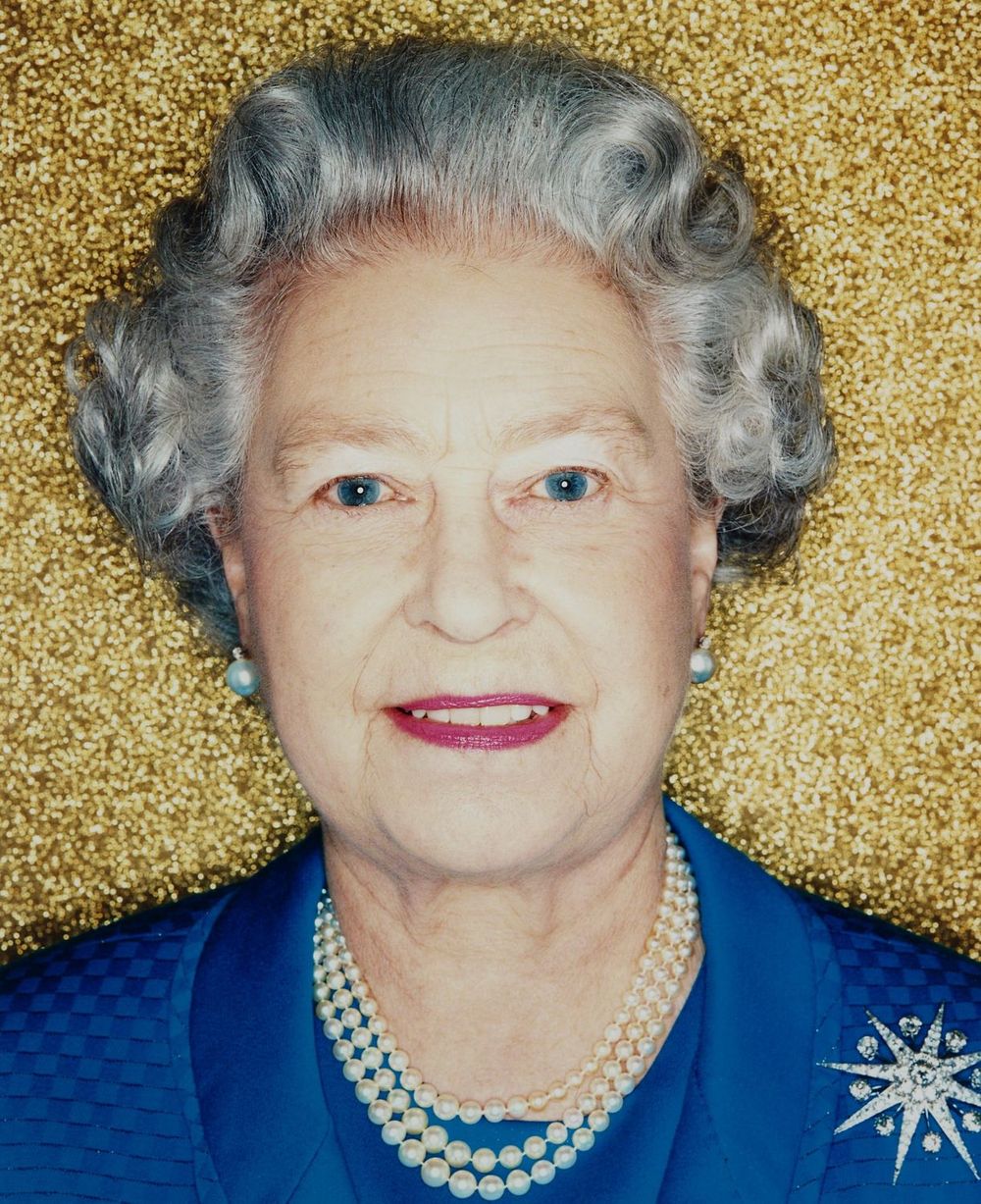
The photograph was taken to mark the fiftieth anniversary of the Queen's Accession in 2002
An image of the Queen from 2002, by Polly Borland (b. 1959), taken on the occasion of the fiftieth anniversary of her Accession, appears towards the end of the exhibition. As with the Dorothy Wilding engagement shot of 1947 the Queen looks straight into the camera, she wears a little more jewellery this time, in addition to her pearls, a diamond star brooch on her left shoulder and pearl earrings. The bright gold background has none of the serene neutrality of the Wilding shot but the photograph’s fresh informality and lack of pomp is a suitable up to date companion to the earlier photograph taken when Princess Elizabeth would soon embark on her very distinguished and illustrious role as Queen.
Platinum Jubilee: The Queen’s Accession is on view until 2nd October 2022 in conjunction with the Summer opening of the State Rooms at Buckingham Palace | Find out more here

